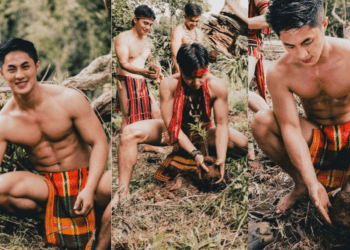Some 160 individuals planted close to 3,000 mangrove seedlings during the mangrove planting activity on Sunday early morning, February 14, 2021, in Sitio Bucana, Barangay Iwahig, Puerto Princesa City as part of the Mangrove Rehabilitation activity spearheaded by the Office of the City Environment and Natural Resources Office.
Per report from the City ENRO- Forest Management Division, a total of 2,963 propagules of Ceriops tagal locally known as tangal and Xylocarpus obovatus locally known as tabigi species were planted during the activity within the 1.9-hectare planting site which is part of the damaged mangroves area in Bucana, Brgy. Iwahig.
The activity spearheaded by the City ENRO was joined by the Department of Environment and Natural Resources (DENR) through their PENRO and CENRO offices, Bantay Gubat, Bantay Dagat and Bantay Bakawan which is now an enforcement division of the City ENRO, Pilipinas Shell Foundation Inc. (PSFI), Palawan Geographic Society, among others. It was also participated by barangay officials of Barangay Iwahig, civic organizations, bikers, among others.
Present were the City Environment and Natural Resources Officer (City ENRO) Atty. Carlo B. Gomez, PENR Officer Forester Eriberto Saños, CENR Officer Forester Felizardo Cayatoc, PSFI Program Manager Ynna Lauron, Punong Barangay of Iwahig, Yolanda Evangelista among others.
The planting site is a damaged mangrove area subjected to occupation by the former City’s police chief himself that resulted to his immediate transfer.
Zorina Arellano, Senior Environmental Management Specialist of the City ENRO said that the Mangrove Rehabilitation activity coincides the traditional “Love Affair with Nature” activity in Puerto Princesa City, a tree planting activity that started in 2003 and institutionalized in 2005 through the passage of City Ordinance No. 287, an ordinance declaring February 14 of every year as “Love Affair with Nature Day” in the City of Puerto Princesa.
For two years now, the Love Affair with Nature activities was suspended due to the government’s warning to avoid large gatherings which might lead to close contact or possible exposure to Coronavirus disease (COVID-19).
Last year, February 2020, despite the suspension of the traditional Love Affair with Nature, the Office of the City ENRO proceeded with the nurturing activities coinciding and nurtured more than 6,000 young Talisay, Ipil, Taluto, Bani and Dangkalan trees, within the seven-hectare tree plantation in Coastal Belt Project in Tagbarungis, Barangay Inagawan-Sub.
The mangroves are known for its ecological importance. They form dense forests in our coastal areas. Their intertwining roots help them survive in the saline and brackish waters. They filter sediments, heavy metals, and other pollutants from rivers and other water bodies upstream trapping sediments before it reaches the ocean. They also absorb carbon and essential to maintaining water quality. Moreover, mangrove swamps are important breeding ground and nurseries for fish and other marine species which significantly support a massive diversity of wildlife.
Mangrove scientist, Dr. Jurgenne Primavera in one of her lectures said that the ecosystem services of mangroves have totaled to US$14,660 to $16,142 per hectare, because of its ecosystem services as food, medicines, shelter (nipa shillings as roofs), coastal protection, erosion control, maintenance for fisheries and carbon sequestration.






















Discussion about this post